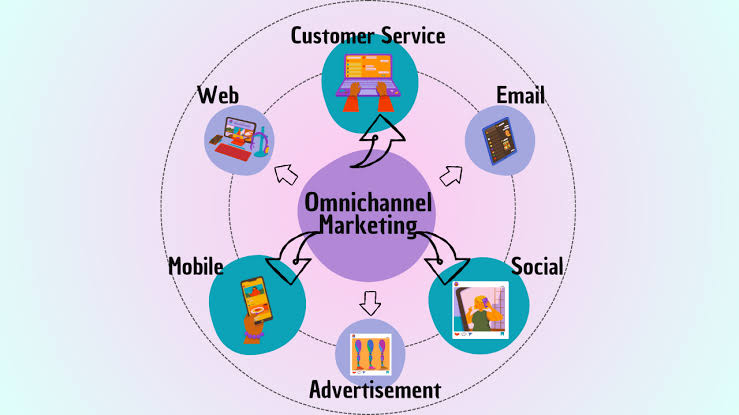Explore the concept of omnichannel marketing and its importance in creating a seamless customer experience across all platforms. Learn about key components like customer data integration, consistent messaging, cross-channel integration, and personalization. Discover how an effective omnichannel strategy can enhance customer satisfaction, drive revenue, and overcome implementation challenges.
In today's digital landscape consumers interact with brands through various channels including websites, social media email and in-person experiences. The expectation for cohesive and integrated experience across these platforms has given rise to concept of omnichannel marketing. This approach emphasizes importance of delivering seamless and unified experience for customers regardless of channel they use. This article delves into significance of omnichannel marketing. It offers practical insights on how to implement strategy that ensures consistency and enhances customer satisfaction
Understanding Omnichannel Marketing
Omnichannel marketing refers to creating consistent and integrated customer experience across multiple touchpoints. Unlike multichannel marketing which focuses on using various channels independently, omnichannel marketing seeks to unify channels into cohesive whole. This approach recognizes that customers may engage with brand through different channels at different stages of their journey. It aims to provide seamless experience that reflects brand's values and messaging.
The essence of omnichannel marketing lies in ability to track and analyze customer interactions across all channels. This data-driven approach allows brands to understand customer behavior and preferences and pain points. It enables them to tailor strategies and deliver personalized experiences. The ultimate goal is to create fluid and interconnected journey that enhances customer satisfaction and drives loyalty.
The Benefits of Omnichannel Marketing
Implementing effective omnichannel marketing strategy offers several advantages for businesses. First and foremost it enhances customer experience by ensuring consistency and continuity across touchpoints. When customers receive unified message and experience, they are more likely to engage with brand positively. This leads to increased satisfaction and loyalty.
Omnichannel marketing also provides valuable insights into customer behavior. By integrating data from various channels brands gain comprehensive understanding of how customers interact with their products or services. This data can be used to optimize marketing efforts, refine messaging and improve overall strategy.
Additionally well-executed omnichannel strategy can drive increased revenue and sales. By offering seamless experience, brands reduce friction in customer journey. This makes it easier for consumers to make purchases and complete transactions. This can result in higher conversion rates and greater customer retention.
Key Components of an Effective Omnichannel Strategy
To create successful omnichannel marketing strategy businesses must focus on several key components:
1. Customer Data Integration: Centralizing customer data from various channels is crucial for achieving unified view of customer interactions. This involves integrating data from websites social media, email campaigns and other touchpoints into single system. By doing so brands can track customer behavior and preferences. Engagement is enabled, allowing them to deliver personalized experiences.
2. Consistent Messaging: Ensuring that messaging is consistent across all channels is essential for maintaining cohesive brand identity. This means using same tone language and branding elements across websites, social media email and in-person interactions. Consistent messaging helps reinforce brand recognition and builds trust with customers
3. Cross-Channel Integration: Effective omnichannel marketing requires integrating various channels to create seamless experience. This involves ensuring customers can transition smoothly between channels without encountering inconsistencies or disruptions. For example, if customer starts purchase on mobile app and later completes it on website experience should be seamless and unified
4. Personalization: Personalizing customer experience is key aspect of omnichannel marketing. By leveraging customer data brands can tailor messaging and offers to individual preferences and behaviors. Personalization includes recommending products based on past purchases. Sending targeted promotions and addressing customers by name are also important.
5. Real-Time Interaction: Providing real-time interaction and support is essential for enhancing customer experience. This involves offering live chat support and responding promptly to social media inquiries. Ensuring customer service representatives have access to relevant data across channels is necessary. Real-time interaction helps address customer needs quickly and effectively.
6. Technology and Tools: Utilizing right technology and tools is crucial for implementing effective omnichannel strategy. This includes customer relationship management (CRM) systems, marketing automation platforms and analytics tools. These tools help brands manage and analyze customer interactions. They track performance and optimize strategies.
Challenges in Implementing Omnichannel Marketing
While benefits of omnichannel marketing are significant implementing effective strategy can pose challenges. One primary challenge is integrating data from various sources into cohesive system. This requires robust technology and data management practices to ensure accuracy and consistency.
Another challenge is maintaining consistency across channels. Ensuring that messaging, branding and customer experiences are unified requires careful planning and coordination. Brands must also be prepared to adapt to changing customer preferences and behaviors. This may require ongoing adjustments to strategy.
Additionally personalizing customer experience can be complex, particularly when dealing with large volumes of data. Brands must strike balance between personalization and privacy. They must ensure that customer data is used responsibly and transparently.
